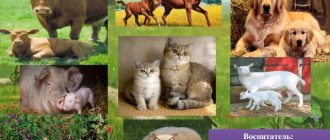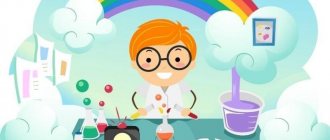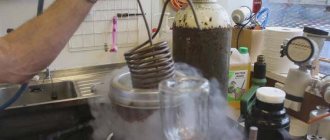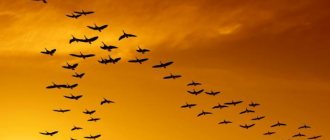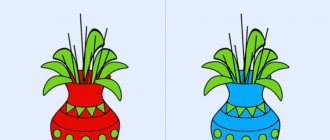Snow, ice. Experiments with ice and snow
Contained in sections:
Experimental activity “Artificial snow”
Our first
experiment “Artificial
Snow ”
experiments from Simple Science on sale I bought it for the kids to try and everyone liked doing experiments . In this review I’ll tell you how to get white, crumbly and warm snow .
Summary of the experimentation lesson “Experiments with snow and ice” in the first junior group Summary of the experimentation lesson “Experiments with snow and ice” “Little wizards” in the first junior group Educational area: “Cognitive development” Type of activity: Cognitive and research. Goal: Involving children in elementary research.
Experimental activity “Snow and Ice” Snow is not only winter fun, it is a subject of research that contains so many interesting, curious and attractive things. And most importantly, you don’t have to go far, here it is – the subject of research, under your feet! Amazing is nearby! Children often ask questions: why.
Article “A preschool child is a natural explorer. Experimenting with. »
A preschool child is a natural explorer of the world around him. The world opens up to the child through the experience of his personal feelings, actions, and experiences. “The more a child has seen, heard and experienced, the more he knows and has learned, the more elements.
Summary of a lesson on experimental activities in the middle group “Properties of Snow”
Goal: To familiarize children with the properties of water and snow through experimental activities. Objectives: 1. Systematize ideas about snow and its properties: sticky, cold, wet, melts in heat, turning into water, through examination of the object and experimental activities.
Kids experimenting with ice and snow
Photo report “Kids experimenting with ice and snow” Experience with snow in the second junior group For the experiment, we needed a container, a snow mold (for an aesthetic look, you can take any mold for snow. Paints (gouache) of any color, brushes, snow. Purpose: to teach.
Source
Snow flowers
Experiment number 3. For this, prepare a soap solution and a straw. By the time the experiment begins, children should already know that snowflakes are microscopic crystals, the formation of which occurs in clouds in cold weather. The purpose of our experience will be precisely to see how this happens.
To carry it out, you need to leave the room on a clear, frosty day (the air temperature should be quite low). Almost all experiments with ice or snow outdoors require cold weather - nothing will work during a thaw.
Try blowing a large soap bubble through a straw. Snow “flowers” will form under a thin layer of film and grow right before your eyes.
At the same time, it is worth demonstrating to children the process of frost formation. It’s even easier to do this - when it’s cold, we take a cup of boiling water with us outside and cover it with something metal, for example, a saucepan lid. Droplets of steam from boiling water will settle on it and quickly turn into frost crystals in the frosty air.
Experiments with snow in the senior group
Natalya Medetskaya
Experiments with snow in the senior group
Already at preschool age, children actively explore the world around them and ask their parents many different questions. Winter is an excellent period for conducting experiments with snow . Thanks to them, children will learn to understand how and why many natural phenomena occur.
Goal: developing research and educational interest through experimentation with ice and snow .
— expand children’s knowledge about winter;
- during experimentation, determine the properties of snow (white, opaque, loose, melts in heat, odorless)
;
— develop children’s ability to answer search questions;
— teach children to put forward hypotheses and test them experimentally ;
- enrich children's vocabulary;
- cultivate interest in experimental activities and the desire to engage in them.
Preliminary work: observing winter phenomena while walking; looking at snowflakes; reading poems, fairy tales, riddles about winter.
Materials for the lesson: snow , a container of water at room temperature, a spoon, 2 glasses, cotton wool, paints.
Are experiments necessary for preschoolers?
What patterns can a kindergarten child understand? We can talk quite confidently about the different states of substances, their transition to other qualities, the characteristics of air, the ability of sand to pass water, and the like.
Experiments for preschoolers help sharpen logical thinking, ability to make comparisons and make correct conclusions. Children learn to formulate their own opinions and defend them.
Each of them should be based on the ideas that the child had at the time the experiment began. Moreover, children should take an active part in the process. When discussing the results with them, preschoolers should be encouraged to express independent judgments. Thanks to simple experiments, children can be introduced to a considerable number of characteristics of water, clay, sand, etc.
As an example, let's look at experiments with ice for kindergarten children, explaining the properties of water, as well as its other well-known state - ice. It would seem that water is a long-familiar and familiar substance to everyone, but how much unknown a child can learn in the course of a well-prepared experiment!
Progress of the lesson:
The snowstorms are swirling, the blizzard is singing songs.
Until the spring drops, all nature will fall asleep.
Cold, snowstorm songs and the road is empty...
And the rivers are encased in a strong shell of ice.
- What time of year is this poem about?
D/i "Snowball"
.
Choose the words to define “What kind of winter is it?”
-how many months in winter? name the winter months; what month is it now? which one will it be? which one was it?
Today we will continue to talk about winter.
It lies quietly all winter, and then runs away ( snow )
What else do you think we will talk about today? (about snow )
Like real scientists, we will engage in research work. Thanks to this work, we will learn a lot of interesting things. Research scientists conduct experiments and make scientific discoveries.
So today we will conduct several experiments and determine the properties of snow .
1. What is snow ?
Snow is a type of precipitation that falls on the ground. It consists of tiny ice crystals. Snow , like rain, falls from clouds. Water vapor rises very high above the ground. The crystal grows all the time and finally becomes a beautiful star. While observing the snow , we note that the shape of snowflakes changes depending on the weather.
Experience 1 . "What does it feel like"
.
snow on our table in a glass . First, look at your palms, how dry are they? Take the snow in your hand and tell me what it is like.
Answers: cold, white, light.
Experiment 2 “ Snow ”
Now let's see what happens to the snow in our hands .
Answer: It melted and turned into water.
Experiment 3 “Identification of smell.”
Now let's check if ice and snow
Experience No. 4 . “Is it possible to color snow ?”
.
the snow with ordinary food dyes or paints and observe exactly how it will be colored and at what speed the paint will penetrate into the snow layer.
Experiment 5 “Filtering melt water”
We pass the water obtained from the snow through a filter (cotton wool)
. There is dirt left on the cotton wool.
Conclusion: Snow contains dirt . Therefore, snow and snow water should not be eaten as they are very dirty.
Well done! We did a very good job today.
- Guys, did you like being scientists and researchers?
Entertaining experiments with air and water in the senior group. Entertaining experiments with air and water. Goal and objectives: To create conditions for the development of children's interest in experimental activities; Photo report of a walk in the senior group “Observing the first snow” Purpose: Consolidating knowledge about snow as a seasonal phenomenon. Instilling love for the nature of the native land, caring for it. It is snowing,. Photo report “Experimental activities in the senior group. Experiments with water and snow" Experimentation teaches children to observe and draw conclusions, develops thinking and attention. Simple experiments arouse genuine interest in children. Summary of a walk in the senior group “Observing snow and ice” Purpose: • to introduce children to a seasonal phenomenon - snowfall; • consolidate the names and sequence of the winter months • form an idea. Summary of a walk in the senior group “Observing snow in February” Objectives: To form ideas about changes in nature; learn to distinguish the characteristic signs of the end of winter (the first drop); consolidate the skill. Experiments with snow, ice and water (photo report) Hello, colleagues! While it's winter outside, I decided to show the children what happens to snow in a warm room and to water in the cold. Experience.
Source
Underwater inhabitants
Experiment number 7. To carry it out, you have to, in addition to snow, find a puddle covered with transparent ice. Kids should already know that transparent planes allow them to see what is underneath them, while opaque planes do the opposite. You can remind them of this by explaining it using the example of simple glass.
During the experiment, we will try to see what is going on at the bottom of a deep puddle or small pond. If there is no such reservoir in the vicinity, you will have to organize it yourself - for example, within a five-liter plastic bottle. Place a composition of sticks, pebbles, nuts, etc. on the bottom, then fill everything with water and leave it in the cold. After freezing under a transparent layer of ice, all objects will be clearly visible.
Then, in front of the children, sprinkle the ice with snow, and the contents of the bottle will immediately disappear from view. Why does this happen? It's simple - snow, unlike ice, is opaque.
To increase the educational value of the experiment, you can also explain to children other properties of snow (flowability, looseness, softness) and ice (fragility, fragility, hardness). Mention the possibility of injury from the sharp edges of ice floes and the need to be careful.
Entertaining experiments with snow
Natalya Vdovina
Entertaining experiments with snow
Where did the snow ?
Collect some snow , bring it into a warm room and put it in a deep plate. Leave for a while until it melts. Draw the child's attention to how much snow there was initially and how little water was left after. Where did the snow ? The children assume that it evaporates. But it's not that. There are the same number of water molecules left. Only the state of aggregation changes. Snow is 95% air. Snowflakes cannot fit too tightly to each other, and therefore take up more space . But in water there are no such gaps between the molecules; accordingly, it occupies a much smaller volume . This can be clearly shown using toys as an example. If you fold them neatly, they will take up less space than if thrown randomly. The experiment with snow is quite simple , but causes a lot of surprise in children. At the end of the experiment, you can examine the sediment that remains in the water. Newly fallen snow taken from the forest will turn out to be more or less clean. But if you took it from the road, then dirt at the bottom cannot be avoided. Perhaps the sight of such water will discourage a child from tasting snow .
Which snow will melt faster : dense or loose?
For this experiment snow of equal volume . Leave one loose and squeeze the other into a ball. Place in two different plates. Which piece will melt faster? If a child carefully observes the process, he will see that loose snow turns into water faster. What is this connected with? It's all about the distance between the snowflakes. Where the snow is loose , there are more gaps, which means warm air penetrates inside. The second, dense piece is warmed only from the outside, so it melts more slowly.
Such an experiment can be carried out on a windless day when it is snowing . You will need dark fabric or colored paper, a magnifying glass, and a camera. Catch a few snowflakes on paper and examine them with a magnifying glass. Mittens will not work, as the snow will quickly melt from the warmth of your hands. Then turn on the macro mode on your camera and take a few shots of snowflakes. Please note that they are all different from each other. This was discovered by the scientist Kenneth Libbrecht, who studied the structure of crystals and created the largest collection of photographs of snowflakes in the world. None of them were repeated. Until now, no one has been able to refute his theory. I wonder if you can find twin snowflakes?
How many degrees is there under the snow ?
The effect of salt on snow
Freezing soap bubble
Explore the world around you using these simple and exciting experiments. The child can carry out many of them independently. Experience is the best way to develop an interest in learning.
Entertaining experiments for older preschoolers with water and ice “The month of February is for experiments, sir” Good day, friends and dear colleagues! At the end of the multifaceted topic “Arctic and Antarctic”, we decided to conduct entertaining activities in the group. Photo report “Incredible Science SHOW” - entertaining experiments for children At the beginning of autumn, employees of the scientific laboratory came to our kindergarten “Korablik” with the program “Incredible Science Show”. Science Show is. Entertaining experiments with air and water in the senior group. Entertaining experiments with air and water. Goal and objectives: To create conditions for the development of children's interest in experimental activities; Didactic game “Entertaining Buttons” “Hands give a person a head, then a wiser head teaches hands, and skillful hands again contribute to the development of the brain.” I. P. Pavlov For a long time already. Experiments with snow, ice and water (photo report) Hello, colleagues! While it's winter outside, I decided to show the children what happens to snow in a warm room and to water in the cold. Experience.
Video report “Entertaining physical experiments in our laboratory” Good day, dear teachers! I would like to share news from our “I want to know everything” laboratory. Until the end of the school year, that means.
Photo report “Entertaining Finance” In preschool age, financial education classes play a significant role. Future taxpayers, savers and borrowers. They learn to differentiate. Entertaining developmental tasks in classes with a speech therapist The main task of a speech therapist in elementary school is to provide assistance to students who have disorders in the development of oral and written speech.
Source
How Santa Claus paints our windows
Experiment number 8. Everyone saw frosty patterns on the window glass. Let's try to reproduce them in “laboratory” conditions. Instead of window glass, let's take a piece of plastic or a dry glass plate that will replace the window. You will also need a cup of hot water and a brush of varying thickness. The weather on the day of the experiment should be quite frosty.
When taking your children out for a walk, warn them that they are about to transform into Santa Claus. If the children are already old enough, you can discuss the plot of the future drawing in advance, and even create a sketch on paper.
When you go outside, carefully apply the pattern with hot water to the dry, pre-wiped surface of the glass using a brush. You need to work quickly before the water hardens. You should not repeat the brush over the same place, but after the picture freezes, you can repeat the procedure and make all the lines thicker and more noticeable.
There are undoubtedly other experiments with ice. You can come up with some things yourself. The main thing is to awaken and maintain children’s interest in such unusual and diverse natural phenomena!
Where did the snow go?
Collect some snow, bring it into a warm room and put it in a deep plate. Leave for a while until it melts. Draw the child's attention to how much snow there was initially and how little water was left after.
Where did the snow go? The children assume that it evaporates. But it's not that. There are the same number of water molecules left. Only the state of aggregation changes. Snow is 95% air. Snowflakes cannot fit too tightly together, and therefore take up more space. But in water there are no such gaps between the molecules; accordingly, it occupies a much smaller volume.
This can be clearly shown using toys as an example. If you fold them neatly, they will take up less space than if thrown randomly.
The experience with snow is quite simple, but causes a lot of surprise in children. At the end of the experiment, you can examine the sediment that remains in the water.
Newly fallen snow taken from the forest will turn out to be more or less clean. But if you took it from the road, then dirt at the bottom cannot be avoided. Perhaps the sight of such water will discourage a child from tasting snow.
Increasing the cooling rate
Experiment number 2. Interesting experiments with ice can be carried out individually - for your own son or daughter. Let's take two large blocks of ice and prepare a couple of cups of hot cocoa. It is more convenient to do this at home. What is this experience based on? Most likely, the child already knows how, for example, a pot of soup is heated on the stove.
Hot air rises. But water also has the same property, where the hottest layer will always be at the top. Remind your child that the soup on the surface of the plate is always hotter than on the bottom.
In our experiment we are going to find out exactly where to place the ice to cool the liquid faster. So, your child loves cocoa. If not, prepare another drink that he will happily drink. Place one of the cups on a piece of ice and cover the other with the same piece of ice. Let your baby carefully use his finger and tongue to find out in which of the cups the cooling process is moving faster, and try to think together about why this happens.
We’ll tell you in advance - the second cup, the one covered with ice, will be able to cool faster. After all, as you know, cold liquid tends to sink down, thus accelerating the mixing of layers.
Which snow will melt faster: dense or loose?
For this experiment you will need two pieces of snow of equal volume. Leave one loose and squeeze the other into a ball. Place in two different plates. Which piece will melt faster?
If a child carefully observes the process, he will see that loose snow turns into water faster. What is this connected with? It's all about the distance between the snowflakes. Where the snow is loose, there are more gaps, which means warm air penetrates inside. The second, dense piece is warmed only from the outside, so it melts more slowly.
Fourth experiment "The Ice Man"
To carry out this experiment, we needed an ordinary piece of ice. First, we sprinkled the ice with salt. The salt corroded the ice and passages and labyrinths formed. To get a better look at them, we took paints and brushes and started painting on the ice.
The girls liked the process so much that they took a few more pieces of ice.
At first they just painted the ice on top, but Lisa decided to paint on the sides as well.
The result is a funny “Ice Man”.
Why did this happen? The freezing point of water is higher than the freezing point of a saline solution, so when we sprinkle salt on ice, a salt solution is obtained on the melted surface of the ice. The freezing point of this solution is lower, so the ice begins to melt.
We decided to stop there, but we liked the experiments so much that we decided to return to this exciting process later.
Studying snowflakes
This experiment can be carried out on a windless day when it is snowing. You will need dark fabric or colored paper, a magnifying glass, and a camera. Catch a few snowflakes on paper and examine them with a magnifying glass. Mittens will not work because... the snow will quickly melt from the warmth of your hands. Then turn on the macro mode on your camera and take a few shots of snowflakes. Please note that they are all different from each other.
This was discovered by the scientist Kenneth Libbrecht, who studied the structure of crystals and created the largest collection of photographs of snowflakes in the world. None of them were repeated. Until now, no one has been able to refute his theory. I wonder if you can find twin snowflakes?
We get clean ice
Experiment number 6. Stock up on water (regular, salty and sweet). Start by telling the children that although they know ocean water is salty, the ice on the surface of the Arctic Ocean is fresh. During the experiment, together with the children, we will find out how freezing water occurs from impurities in the form of sugar and salt.
To conduct the experiment, prepare several ice cubes in advance. Carefully split each of them in half, obtained from sweet, salty, as well as the most common fresh water. Ask the children - do they think that if we freeze sweet or salty water, we will get the same ice?
Most likely, the answer will be yes. But this is wrong - in fact, the water that crystallizes during the formation of ice gets rid of foreign molecules and impurities. To confirm your words, allow the children to lick the ice pieces and make sure you are right.
How many degrees is there under the snow?
And checking this is not so difficult. Take a thermometer and go outside. Outside, measuring the snow will not be difficult. You just need to stick a thermometer into it and wait a little. The temperature will be almost the same as outside.
But how can you find out how many degrees there are under a large snowdrift? You need to try to lower the thermometer as low to the ground as possible. And so that it doesn’t get lost and you don’t have to dig up the entire snowdrift, tie a thread to it, preferably bright and tight, and leave it at the top.
The effect of salt on snow
Tell your child that you can sprinkle salt on it to help the snow melt faster. This is exactly what workers do when cleaning highways. Of course, they use industrial salt, but ordinary salt is also suitable for the experiment: table salt or sea salt.
Collect and place snow in two containers. Leave one aside, sprinkle the other with salt. Observe where the snow melts faster. For clarity, record the start and end times of the experiment.
